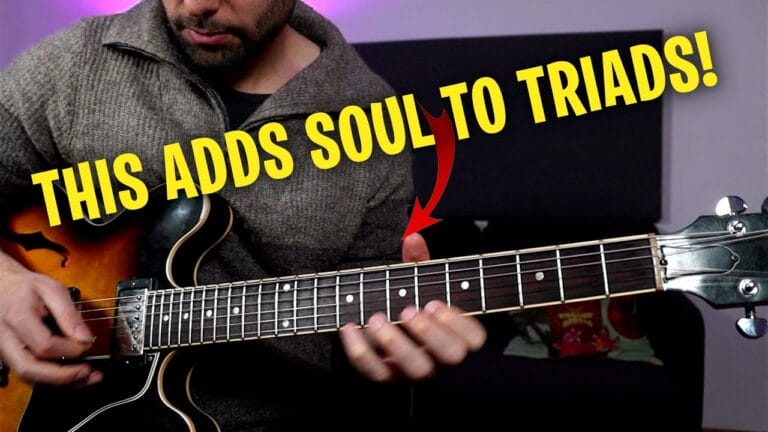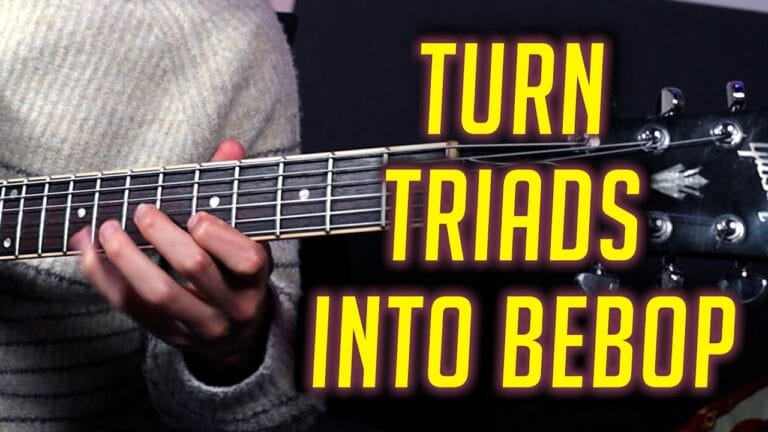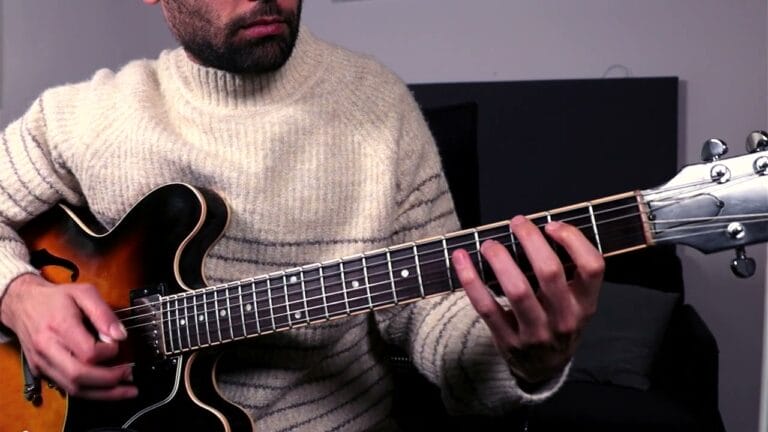Turn Simple Chord Progressions Into Harmonically Rich Music
How To Spice Up Simple Chord Progressions
Are you tired of playing the same old simple chord progressions that lack excitement and creativity? Do you want to spice up your music and take it to the next level?
Well, you’re in luck because today we’re going to learn how to turn a simple chord progressions like 1 6 2 5 chord progression into an interesting and harmonically rich piece of music.
The first thing to understand is that in music, we have tension and resolution in our case today a tonic chord and other chords that eventually want to bring us to a dominant chord, which wants to resolve back to the tonic.
So how can we make this progression more interesting? Let’s start by adding some secondary dominant.
Instead of going straight into the sixth degree, we can aim for a secondary dominant, which is going to be located just a fourth below our target (or a 5th above). In this case, C# minor is our target, and the secondary dominant is G#, which is going to be the V/Vi.
So that means, instead of just playing I into Vi, we created a secondary dominant leading into that diatonic degree.
You can feel the tension in that chord, wanting to resolve to the Vi, and it sounds a little bit more interesting.
The next chord in the progression is supposed to be the 2nd degree F# minor (ii) , but we’re going to add a secondary dominant into that as well (V/ii) C#. in our case today C#7 the 7 in add even more tension to our dominant chord.
Adding a secondary dominant gives us more depth and complexity to the progression.

Let’s Take This Progression A Step Further
to add more tension we can suspend note within the chords, for example Sus4 chords. A Sus4 chord is taking the third from any chord and just pushing it up a step, creating this tension within the chord, adding beautiful movement and tension within the chord.
We can take the progression forward and start adding some tensions to it. All this and plenty of ideas and demonstrations I show in the video so make sure you watch it to the ends, a few times even.
In conclusion, adding secondary dominant, Suspending chords, and adding tension notes to simple chord progressions can make them extremely more interesting and harmonically rich. and This is just the tip of the iceberg when it comes to harmony, but it’s a great place to start and understand the amount of potential that you can find when thinking about harmony. Hopefully, this was useful for you, and you can.





















